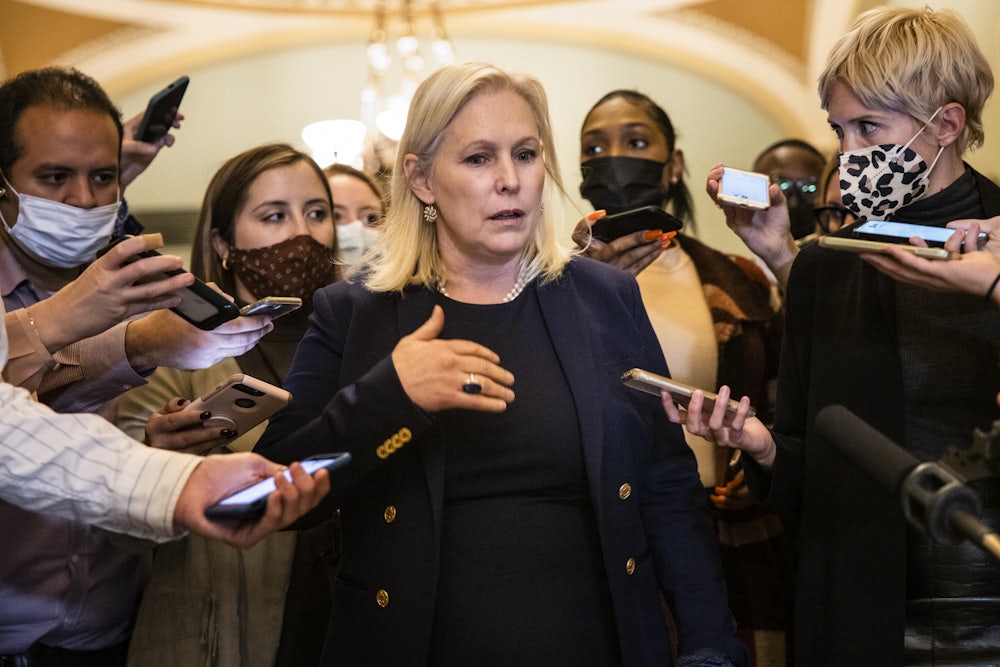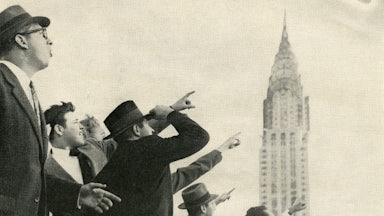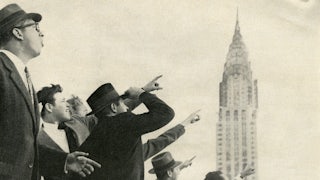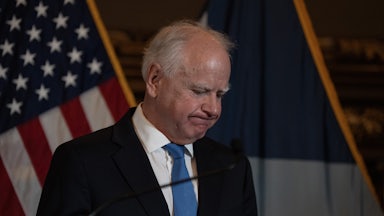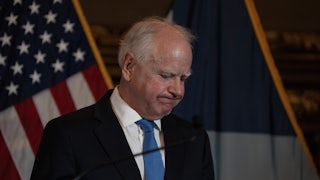Six months after the Office of the Director of National Intelligence, or ODNI, delivered a report to Congress that failed to explain more than 140 reports of unidentified flying objects—mostly because no one in government tried all that hard to explain them—Congress is set to approve legislation to create a new office within the Pentagon tasked with investigating military UFO sightings. The new office will gather reports of sightings, analyze them, and deliver reports to Congress on the subject at intervals. At least that’s the aspect of this decision on which the legislators who pushed for the new office want the public to focus. Underneath the surface, Congress is about to require the Pentagon to get weird. Very weird. Like, imaginary crashed-saucer wreckage weird.
It’s beyond doubt that people see strange things in the sky. It’s also quite likely that there is no single explanation for these oddities. So-called “unidentified aerial phenomena,” as the government now calls UFOs, are likely a combination of natural and human-made objects along with a strong dash of people misinterpreting what they see under the influence of more than a century of alien-themed science fiction. Investigating individual military sightings should be encouraged; uncovering whether some of these perhaps represent adversaries’ efforts to spy on America should be an obvious counterintelligence step. That doesn’t justify leaping to conclusions about superhuman technology or alien invasion, particularly when reasonable explanations have been proposed for nearly all the allegedly incredible sightings.
The 15 pages of section 1638 of the 2022 National Defense Authorization Act, or NDAA, are largely based on proposals sponsored by Senator Kirsten Gillibrand and Representative Ruben Gallego. The final text adopted by the two chambers of Congress incorporates most of Gillibrand’s ideas for a Pentagon UFO office, which range from the sensible to the fantastical. Gillibrand praised herself for taking on the mantle of the government’s chief UFO-hunter, telling Politico, “I’m getting the coolest-mom jersey for sure this year” and joking that a congressional meeting with space alien ambassadors “is coming.”
Joking aside, senators like Gillibrand, Marco Rubio, and Roy Blunt have long claimed that the UFO issue is serious, though their reasoning tends to slide around, the more you probe. Gillibrand has a laundry list of concerns, from the potential national security threat of advanced adversarial technology to the need to give military pilots “a voice” that she believes has been silenced by ridicule.
What remains missing in the discussion is evidence. Previous government UFO investigations turned up no evidence of a national security threat, but this year’s ODNI report changed the equation by asserting that UFOs pose a flight safety risk (mostly due to pilots becoming distracted) and concluding that if UFOs represent advanced technology from a foreign adversary, then they would be a national security risk. They just don’t have much in the way of proof. “We currently lack data to indicate any UAP are part of a foreign collection program or indicative of a major technological advancement by a potential adversary,” the report wrote.
Despite that lack of evidence, the very argument that ODNI could not support was exactly the one Gillibrand used to celebrate her UFO office plan. Indeed, on December 9, Gillibrand put out a press statement asserting that UFOs are threatening American military control of the skies. “Our national security efforts rely on aerial supremacy and these phenomena present a challenge to our dominance over the air,” she said. The UFO report that prompted her plan does not support this claim.
Nevertheless, in endorsing the new UFO office, none of the other politicians involved seemed at all troubled that the greatest military in the history of the world—the one they will soon authorize more than $760 billion to fund—could not, in their view, distinguish clearly between foreign drones; an invasion from outer space; and random weather phenomena, sensor blips, or the occasional errant balloon. They are cheerfully sending the message to Russia, China, and others that America has lost control of its skies.
But, boy, is Congress only too happy to pay the same people who supposedly can’t tell a balloon from an alien invasion to conduct research into sci-fi possibilities anyway—or, rather, to use what the NDAA calls the “special expertise of persons outside the Federal Government” to hunt UFOs, a key indicator that the real beneficiaries of this law are likely to be same small group of pseudoscientists and cable TV personalities who have perverted government research for half a century by steering Congress in the direction of their boutique paranormal obsessions.
As I reported in The New Republic back in May, much of the effort to create a government UFO research program has revolved around a small group of paranormal enthusiasts who cut their teeth investigating imaginary psychic powers and supposedly invisible ghostlike intelligences. The latest round is largely the work of two members of their extended circle with government ties, Chris Mellon and Lue Elizondo. The former recently endorsed a book claiming the government recovered an avocado-shaped UFO piloted by tiny aliens, and the latter has heavily implied that UFOs come from another dimension and represent an overwhelmingly superior species. Elizondo also has a book deal with HarperCollins for a memoir about his quest to force the government to research these alleged phenomena and will be one of the subjects of an upcoming HBO Max drama about the Pentagon and UFOs.
Mellon and Elizondo co-starred on a History Channel UFO-hunting TV show and successfully lobbied last year for Congress to require a UFO report from ODNI. They shared a photo of themselves at the Capitol recently, making their pitch for the UFO office. The NDAA language, largely borrowed from Gillibrand, closely mirrors a proposal Mellon made on his blog in October; Mellon has reciprocated by offering Gillibrand effusive praise.
The headline research the NDAA authorizes involves collecting UFO reports, analyzing them, and attempting to explain them. This much should not be controversial. Indeed, you would expect the military to monitor the skies for any incursions, but apparently, it has not seen The Thing From Another World and is not “watching the skies.” Section 1638’s weirder provisions appear to be taken right out of the fever swamps of cable TV and talk radio, where shows like Ancient Aliens and Coast to Coast AM spin dark tales about alien invasions, crashed saucers, and medical experiments. The law would require the new office to, basically, fantasize about how UFOs might perform extreme aerial feats if they were ever proved to be the product of advanced superscience and then test whether these imaginary scenarios are possible.
We’ve been down this path before. The failed UFO research program Congress authorized in the mid-2000s looked into exactly these matters and produced a series of speculative papers about wormholes, anti-gravity tech, and other impractical fantasies straight out of Marvel Comics that Congress now wants tested in real life. Similarly, the new law will require investigation of “medical” issues created by exposure to UFOs, a prominent theme on the ufology circuit, where abductees and “experiencers” claim to suffer from all manner of maladies as a result of contact with beings from beyond the known world. This old UFO research program spent a considerable amount of effort investigating dubious medical issues, including alleged alien implants.
Beyond this spacey purview, the new office is also tasked with testing “materials” related to UFOs. Since none of the supposed craft seen by military pilots left debris behind, this requirement can only refer to the scraps of metal like those once owned by paranormal talk show host Art Bell and Ancient Aliens star Linda Moulton Howe—said to be scraps of the Roswell flying saucer. Debunked as industrial waste decades ago, one of “Art’s parts” is currently being tested by Elizondo and Mellon’s network of colleagues for alien origins. In 2019, Elizondo and Mellon’s then-employer, Blink-182 frontman and ufologist Tom DeLonge, scored a contract to have the Army test some of the supposed Roswell wreckage under the theory that these metallic lumps could revolutionize the aerospace industry. Now Congress is enshrining the hunt for alien space scraps into law.
The current “expert” on crashed saucer parts is Garry Nolan, a Stanford microbiologist and close colleague of Mellon and Elizondo’s circle of UFO enthusiasts. Nolan is most famous for testing whether a mummified stillbirth from Chile was actually a miniature space alien. (Spoiler: It wasn’t.) He is now working on testing and reverse-engineering alleged flying-saucer wreckage with wealthy paranormal enthusiast Jacques Vallée, whose new book claims otherworldly beings purposely crash their ships into the Earth.
Vallée previously worked on a bonkers Pentagon-funded paranormal project “studying other intelligences and possible interdimensional phenomena” manifesting as UFO space ghosts. Despite the fact that neither man is a metals expert, a recent scientific paper from Nolan and Vallée tested alleged UFO droppings, finding no evidence of aliens. Nevertheless, they ended the paper with speculation about advanced UFO propulsion systems and called for funding to test more alleged UFO materials, exactly the kind of work the NDAA now mandates. It takes no “special expertise” to see the connection.
Regardless of Congress’s hints and suggestions, the legislation gives Secretary of Defense Lloyd Austin and Director of National Intelligence Avril Haines broad authority to determine who will work on the UFO project and the parameters of the research they will conduct. It is imperative that Austin and Haines exercise that authority to reestablish the credibility of America’s aerial research and keep the paranormal enthusiasts, UFO fantasists, and cable TV entertainers out, lest the Pentagon become a one-stop shop for chasing space ghosts coast to coast.
